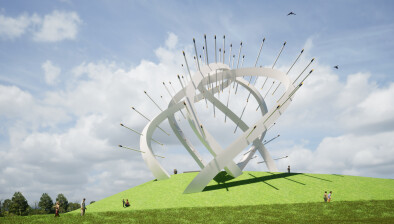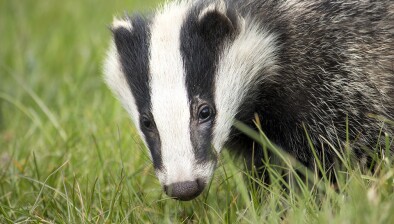And finally… Medieval skeletons uncovered during Aberdeen utility works
A chance discovery during recent utility works in Aberdeen city centre has led archaeologists to the highly significant find of a long-lost medieval friary.
30 skeletons have been uncovered in the Schoolhill area in what is believed to be the burial ground of a thirteenth-century Blackfriar (or Dominican) friary and church.
The remains of a wall, possibly the east wall of Blackfriars church, have also been uncovered.
Contractors first discovered the historic remains at the beginning of July as they carried out utility works associated with a new boiler plant at Robert Gordon University’s Schoolhill administration building.
As it is well-known that the Blackfriars had occupied the area, Cameron Archaeology Ltd were employed by contractors to monitor all soil stripping with Aberdeenshire Council archaeologists providing support.
Aberdeenshire Council’s Archaeology Service protects, manages and promotes the surrounding historic environment and also provides these services for Aberdeen City Council, Moray Council and Angus Council.
Alison Cameron of Cameron Archaeology Ltd said: “It is very exciting to find the first intact burials from the Blackfriars house, we knew that they had occupied this site but we did not know the exact location of the church and graveyard.
“Finding a skeleton 40 centimetres below the pavement in front of the Art Gallery was a surprise but this find will allow us to discover much more about this area of the city during the medieval period.”
Aberdeenshire Council archaeologist, Bruce Mann, said: “In the city centre there is always the possibility of something of interest being found when someone digs into the ground, which is why we advise on these types of works.
“The bones are generally well preserved and will now be sent for further study to determine the age of the individuals at death, their stature and any diseases from which they suffered, as well as possible causes of death.”
The first skeleton was found below the pavement area in front of Aberdeen Art Gallery with the remainder discovered in trenches between the gallery and RGU’s Administration building and within the quadrangle between RGU and Robert Gordon’s College.
A Blackfriar, or Dominican, house was founded between 1230 and 1249 by Alexander II, who is said to have bestowed on it his palace and garden situated between Schoolhill, Blackfriars Street, Woolmanhill, St Andrews Street and Harriet Street.
Both the friary and church were destroyed during the Protestant Reformation in the mid-sixteenth century.
Excavations at the site in 1833 revealed a south-facing building belonging to the friary as well as a stone-built grave containing three skeletons.
The graveyard to the east of the church discovered this month is likely occupied by deceased members of Aberdeen families would could afford the costs of these burials.
The remains have now been lifted and work has continued onsite with cabling laid and the trenches mostly backfilled.
The remains show that men, women and children were buried in the graveyard, including a very young baby, possibly a newborn buried in the upper fill of an adult grave.
Radiocarbon dating will be carried out to establish when the burials took place and once investigations are complete, the bones will be reburied in the nearest consecrated ground to where they were originally buried.
A small assemblage of building materials and pottery will also be studied by specialists to reveal more about the site.















